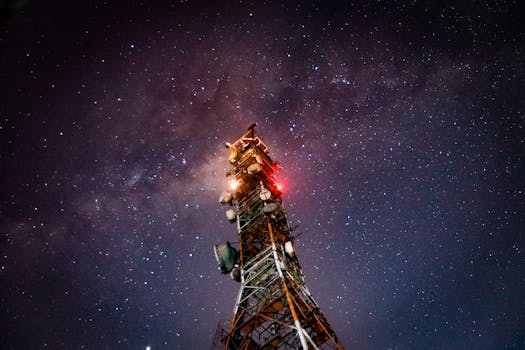
MEO Satellites: Revolutionizing Global Connectivity with Medium Earth Orbit Technology
Medium Earth Orbit (MEO) satellites are revolutionizing the way we communicate globally, offering faster and more reliable connections than traditional Geostationary Earth Orbit (GEO) satellites. With their unique orbital position, MEO satellites are poised to play a critical role in shaping the future of global connectivity.
MEO satellites operate at an altitude of approximately 2,000 to 36,000 kilometers, which is lower than GEO satellites but higher than Low Earth Orbit (LEO) satellites. This orbital position provides several advantages, including lower latency, higher signal strength, and improved coverage. As a result, MEO satellites are ideal for applications that require real-time communication, such as video conferencing, online gaming, and remote healthcare.
History and Development of MEO Satellites
The concept of MEO satellites dates back to the 1960s, when the United States launched the first MEO satellite, called the Transit 1A. However, it wasn’t until the 1990s that MEO satellites began to gain traction, with the launch of the first commercial MEO constellation, the Iridium network. Today, MEO satellites are used for a variety of applications, including navigation, communication, and weather forecasting.
Advantages of MEO Satellites
MEO satellites offer several advantages over traditional GEO satellites. One of the primary benefits is lower latency, which is the delay between the time data is sent and the time it is received. MEO satellites have a latency of around 20-30 milliseconds, compared to 200-300 milliseconds for GEO satellites. This makes MEO satellites ideal for applications that require real-time communication, such as video conferencing and online gaming.
Another advantage of MEO satellites is higher signal strength. Because MEO satellites are closer to the Earth than GEO satellites, they require less power to transmit signals, resulting in a stronger signal. This makes MEO satellites more reliable and less prone to interference.
Challenges and Limitations of MEO Satellites
Despite the advantages of MEO satellites, there are several challenges and limitations to consider. One of the primary challenges is the cost of launching and maintaining a MEO satellite constellation. Launching a single MEO satellite can cost tens of millions of dollars, and maintaining a constellation of satellites can be even more expensive.
Another limitation of MEO satellites is the risk of interference from other satellites and terrestrial systems. Because MEO satellites operate at a lower altitude than GEO satellites, they are more susceptible to interference from other satellites and terrestrial systems. This can result in a loss of signal strength and reliability.
Future of MEO Satellites
Despite the challenges and limitations, the future of MEO satellites looks promising. With the increasing demand for global connectivity and the need for faster and more reliable communication, MEO satellites are poised to play a critical role in shaping the future of satellite technology.
Several companies, including OneWeb and Amazon’s Kuiper Systems, are planning to launch MEO satellite constellations in the coming years. These constellations will provide global coverage and offer a range of services, including broadband internet, navigation, and communication.





